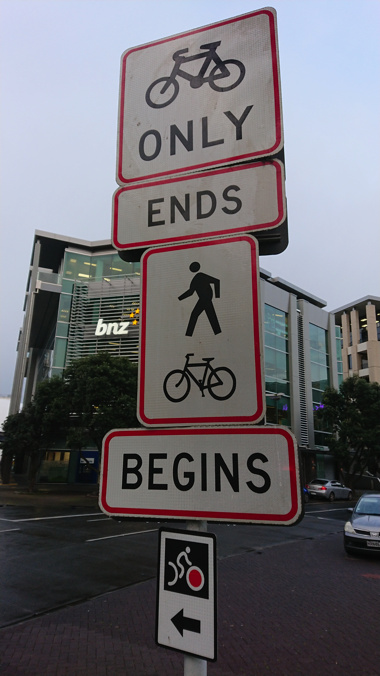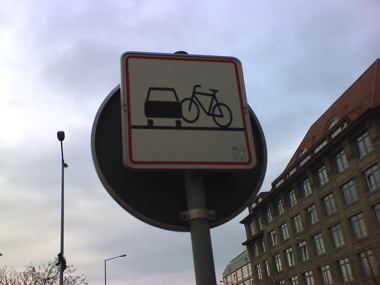Relativity on Two Wheels
June 24th, 2021 | by Andreas Richter
(3 min read)

In one of my first posts I tackled the difference between absoluteness and relativity. Now I have a different example because I also like to ride on two spoked wheels.
Some weeks ago Germany’s Federal Ministry of Transport and Digital Infrastructure announced “The National Cycling Plan 3.0” to improve cycling infrastructure in Germany. They will spend up to 1.46 billion EUR until 2023 for cycling traffic. 45 million EUR shall be spent for trans-regional bicycle highways and for setting up of a national bicycle network database with access for app developers to provide routes, track quality information and infrastructural equipment to cyclists. The goal is to create a significant national cycle network and to connect it to the European cycle network.
This is absolutely good news for cyclists but likewise only relatively good news. 45 million EUR compared to 4.2 billion EUR spent yearly on (merely) road maintenance sound like a joke (construction of new roads holds an additional budget of roughly 6.73 billion EUR). By the way: For the railway, Germany will spend 8.5 billion EUR for both maintenance and new tracks. And waterways will solely get 1.4 billion EUR for maintenance as well as new constructions/replacement.
And again, 45 million for new trans-regional cycle highways sounds good but you have a look into the cost details of these bike ways. For example, between the German cities Braunschweig and Wolfsburg – this area is famous for high daily commuting traffic volume – such a trans-regional bike way is already being planned (feasibility study in German). The good thing is that the new bike highway should be built using already existing infrastructure. Nevertheless, new land acquisition will be necessary (1.5 million EUR), intersections will have to be “alleviated” (8 million EUR), some infrastructure newly built (5.8 million) and operating technology including its planning has to be invested in (3.2 million EUR). In summary, for the foreseen 25 km between Braunschweig and Wolfsburg we need more than 18.5 million EUR! Compare this to a Germany-wide budget of 45 million! OK, to be fair, the overall investment budget of the National Cycling Plan 3.0 will be greater because the plan’s funding quota accounts for 75 % (except for economically underdeveloped regions which get higher support) while the remaining bit will be boosted by local municipalities. In contrast, our Braunschweig-Wolfsburg connection – which is unaffected by this plan – is funded solely by the three involved municipalities.
Additionally, these 45 million EUR shall also be used for setting up a new database with information about the cycle ways and their quality. One important feature is supposed to be the accessibility by mobile apps. Hasn’t anybody in the government ever come across OpenCycleMap? Have a look, you already find the planned trans-regional cycle way Braunschweig-Wolfsburg in it! Even Google Maps knows some categorized cycle ways as additional layer. So, why to create yet another data pool instead of facilitating existing ones that are open source, well integrated and free to use?
Contributing to OpenStreetMap would have a direct impact on the data quality of commonly used products from different providers and therefore would reach the cyclists directly. Just to name a few navigation products: Komoot and Strava apps, Wahoo and Garmin devices or Bosch‘s eBike system.
As mentioned in the beginning, the database should contain also information about the quality of the cycle ways. For roads (especially highways) a mobile mapping solution is used to scan the surface and map roadway damages. Such measuring vehicles can operate at up to 80 km/h (in railway domain this can be done at up to 270 km/h). Now, the methodology should be applied to cycle ways as well. The German state North Rhine-Westphalia set up a quad-like buggy with laser scanners and cameras to gather information about cracks, patches and root-caused bumps. 910 km will be surveyed with a speed of 10 to max. 20 km/h. In North Rhine-Westphalia 7,200 km of cycle ways are existing in total. Happy surveying and don’t forget that surveyed data gets out of date immediately.
Why not to set up an interface to an open source data base where cyclist can report damages or other issues with their smartphone (including timestamp, photos and geo-position)? The amount of reports from this crowd on identical issues can give you additional hints about the usage of the cycle ways and the priority of fixing damages… continuously. The buggy mentioned above is provided by a contractor, and the project is only a one-time job. Results will be available at the beginning of 2022. Let’s see what future will reveal what we never knew long time ago.
The easiest way to deal with problems regarding cycle ways in Germany is to set up the road sign 101 (danger zone) together with VZ 2010 “Radwegschäden” (cycle way damages).

Additional fun fact: The cycle way damages sign (VZ 2010) is not an official part of the German Road Traffic Act whereas the sign for road damages (1007-34) is. But also the sidewalk damages sign (VZ 2009) is no official one…